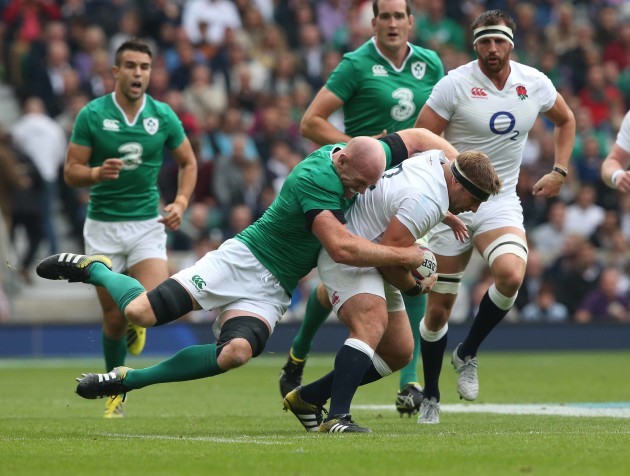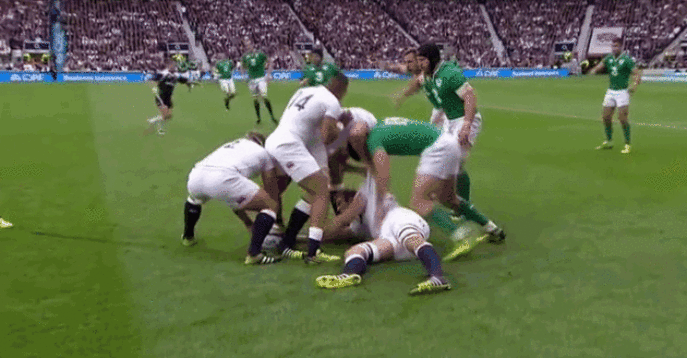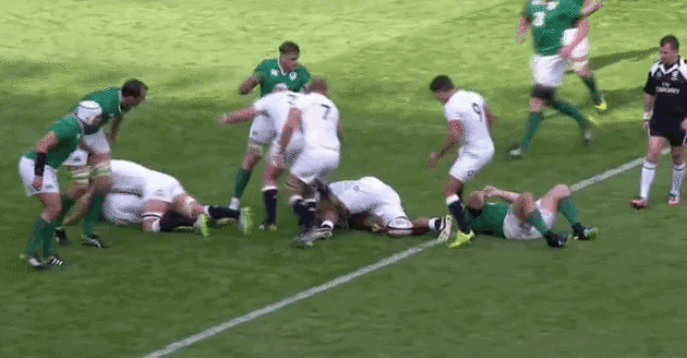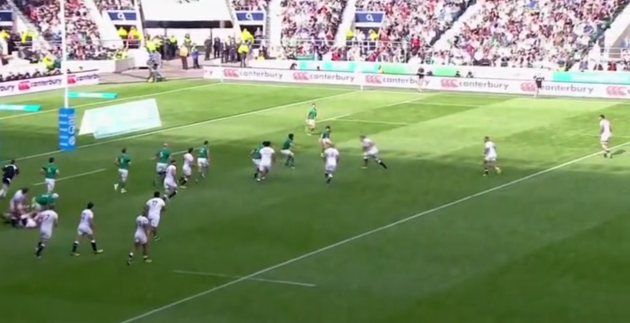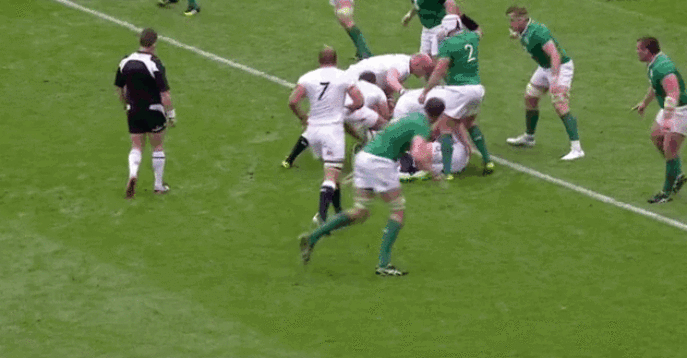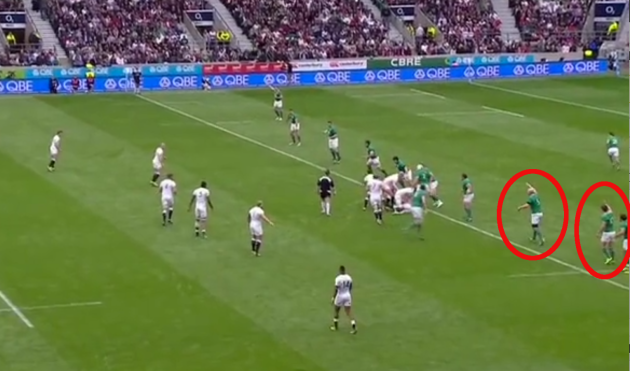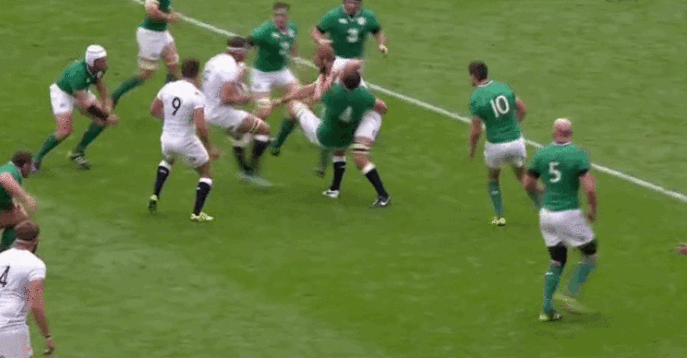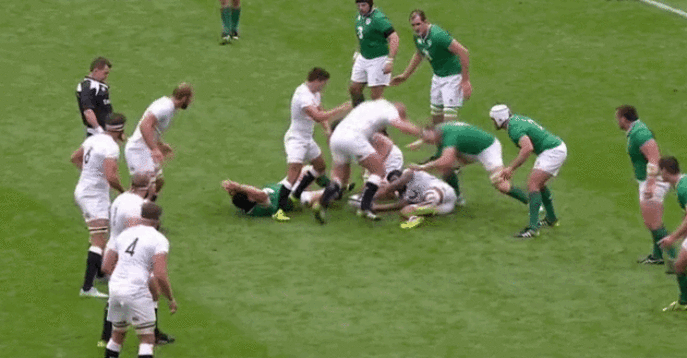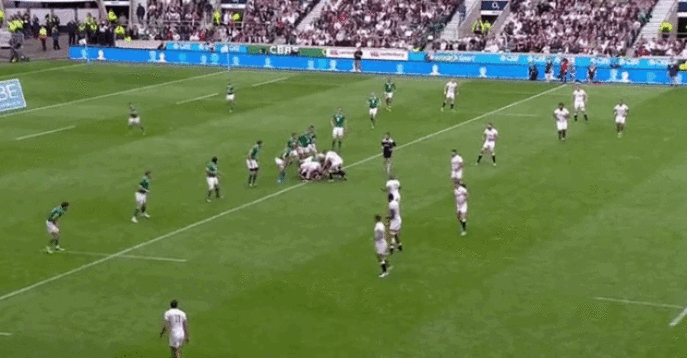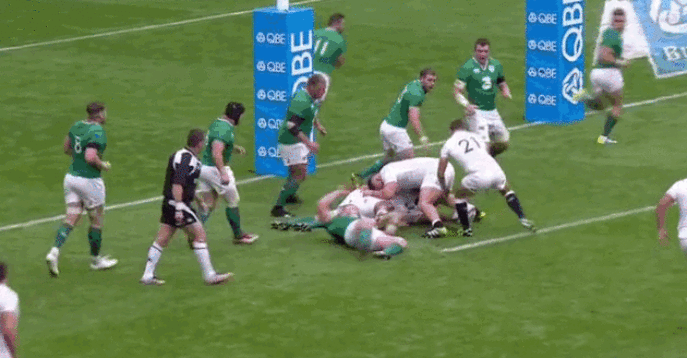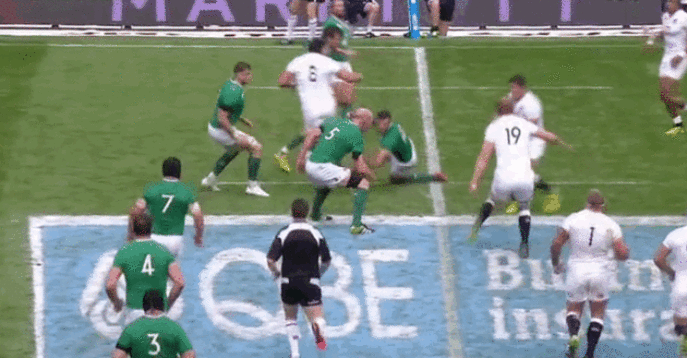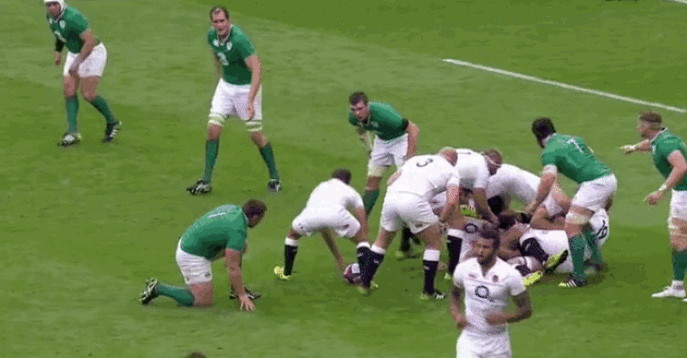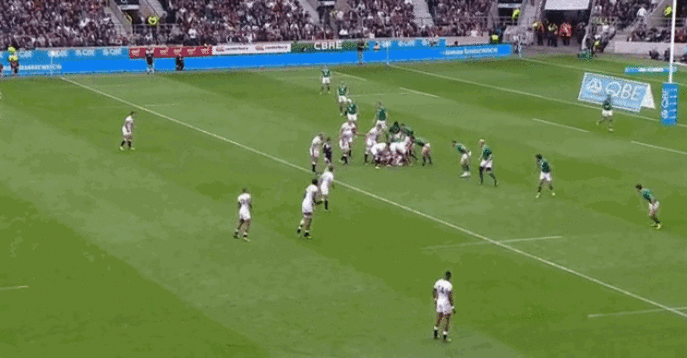IRELAND WON’T BE panicking, but a disappointing performance against England on Saturday will serve to sharply focus their minds with the World Cup now less than two weeks away.
Avoiding the type of injuries Wales sustained against Italy is a positive, but the more worrying thing about the display at Twickenham was Ireland’s intermittent lack of mental clarity, concentration and aggression.
Joe Schmidt’s team, like many other world-class sides, don’t generally go all in for frothing-at-the-mouth madness in their mindset, preferring instead to balance that with a clear-headed focus on their processes.
Oftentimes, they find an ideal meeting point between those extremes, but the defeat to England saw them simply falling off the scale altogether at times.
Speculating on why Ireland’s mental approach to this game was poor is an impossible thing to do without being privy to exactly what’s going on inside their environment, but Schmidt and his leadership group will look to learn a lesson in that regard.
The first half in Twickenham was somewhat reminiscent of Ireland’s performance against Australia in Dublin in 2013 – a low in Schmidt’s tenure. After that defeat, Paul O’Connell pointed out that Ireland had lost sight of the importance of an aggressive edge.
I suppose for a few of us, we have a little bit to learn under Joe. There’s a lot of technical stuff we need to get right,” said O’Connell. “But you can’t lose track of that intensity and aggression that’s required in Test rugby as well.”
In analysing this game, we cannot ignore the facts that Ireland are not close to peaking yet, that some players were playing for only the second time this season, and that they are likely to be facing a barrage of information in training as the World Cup approaches.
Nonetheless, certain aspects of the performance against England won’t be acceptable to this group of coaches and players.
Tackling
Ireland are all about the basics, and straight-up missed tackles really haven’t been a feature of their biggest performances under Schmidt.
At Twickenham, they were a regular occurrence and stretched Ireland’s defence to breaking point.
Schmidt’s side are in good shape defensively in the example above, with bodies in the line even after England have made yardage up the right-hand 15-metre channel. It’s a prime opportunity to turn on the linespeed and reclaim some territory, but Ireland are passive.
They do get off the defensive line, but there’s no urgency, no aggression. Devin Toner uncharacteristically slips off a straight-up one-on-one tackle and Ireland have been bust.
They lose Conor Murray for the rest of the game as he attempts to clean up behind the front-line defence, and Ireland are in real danger of conceding a third try in just the 17th minute, but for Nigel Owens’ excellent decision to halt play with Murray unmoving on the deck.
There were many more examples of simple missed tackle from Ireland in this game, as the powerful and elusive English carriers won many of the collisions.
The lapses in concentration even when there was no direct failure in the tackle were equally as bothersome for Ireland, as in the instance above where Eoin Reddan switches off and allows George Ford to break.
Again, the numbers are positive for Ireland initially, but it takes a good covering tackle from Simon Zebo to prevent a try. Even at that, England should probably score on the very next phase.
Joe Launchbury opts to tuck the ball under his arm and carry after the recycle, despite the presence of three of his teammates outside him in space. A more clinical and finely-tuned team would have punished Ireland’s defensive error with a score.
Filling the line
One of the issues Ireland’s defence had during the Six Nations, particularly in the meeting with France, was ensuring they ‘numbered up’ comprehensively.
That is, they often had extra bodies on one side of the ruck where they weren’t really needed, rather than having them ‘fold’ to the other side of the ruck where there was more of a threat from the attack.
Getting a grip on the breakdown and slowing the opposition ball makes this far easier of course, so with Ireland struggling to do that against the English in the first half, and with their line being broken frequently, they often failed to number up ideally.
Jonny May’s disallowed try provides us with one example when Ireland might ask if they could have got another body to the more threatening side of the ruck, allowing them to defend more comfortably.
When we freeze the frame as England begin the phase, we can see Paul O’Connell and Johnny Sexton have been signalling and communicating the need for bodies over on the right side of the ruck, recognising as they do a lack of threat in front of them on the left.
Could any player have realistically folded to that right side and therefore allowed Ireland to cover the width of the English?
Part of the issue is that Ireland have been breached only moments before, making it a huge task for defenders to recover shape swiftly.
Above, we see the breakdown that precedes England’s try. Could Jack McGrath have folded across to the right? Could Jamie Heaslip have entered the line rather than hover in behind the tackle point? England had already made one clever pick and go through the middle, so perhaps that was in the number eight’s mind.
Even without an extra body, Ireland have five defenders in the front line against six attackers and would expect to successfully halt the English.
The ‘success’ – the try was disallowed for Tom Youngs’ forward pass of course – of Stuart Lancaster’s side here is down to their clever and simple rugby league-style decoy play.
Watch how Robbie Henshaw is first forced to fight past Brad Barritt and then is checked by the subtle straightening line of Jonathan Joseph before the England 13 passes, leaving Tommy Bowe exposed in a two-on-one.
Even though England break on the outside edge, it’s a position that Ireland’s defensive system should have covered through the sweeping Reddan. However, he lacks urgency in covering across as the emergency tackler on the outside and May jumps clear in the corner for a try.
This game highlighted the importance of Conor Murray to Ireland’s defence, though Reddan was good going forward. The Munster man is superb at sweeping and excels with his physicality when he steps forward into the front line too.
The above score was disallowed but it pointed to the huge stress Ireland’s defensive system was under. There were other examples of Ireland’s hesitation and delay in folding in this game, and it’s something Les Kiss will look to address in the coming weeks.
The narrowness we are currently seeing in Ireland’s defence is a direct product of not having even that one extra body in the line, allowing everyone to move forward with greater linespeed and confidence.
System errors
Part of the reason Ireland found themselves in the situation above was because of a breakdown in their defensive system just seconds previously.
Rory Best is the pillar on the left side of the ruck from Ireland’s point of view, with Jack McGrath acting as the ‘post’. England scrum-half Ben Youngs runs an arcing line out from the ruck, with McGrath pinpointing his intentions and hammering into the tackle.
The issue is that Best has also chased the scrum-half, eager for a hit, and that leaves Ireland exposed in the pillar position, Chris Robshaw taking advantage as he reads Youngs’ thinking and runs a switch into the space.
It’s not a huge bust, but it is again a demonstration of Ireland’s defensive shape stuttering and providing England with momentum.
These are very uncharacteristic things for an Ireland team whose 2014 and 2015 Six Nations wins were built on solid defence, and the habits of old were sorely missing at times at Twickenham.
England’s excellent attacking shape is once again essential to cutting Ireland in the example above, but Kiss and Schmidt may view this as a missed chance for their side to be dominant in defence.
It’s a difficult situation for Bowe on the outside edge when England’s shape holds down the inside defenders, but could he have been more impactful with his tackle on Sam Burgess? He’s come that far, is never going to get to Jonny May on the outside at that stage, so has to look to seal the deal by preventing the offload.
Whereas we have seen examples of Ireland’s proactive decisions in defence in the past – and saw a few further examples in this game – there were many more moments in which hesitance and a lack of aggression saw England benefit.
Heaslip gets stood up by the sublime Jonny May on the outside here, before Donnacha Ryan does well to make a try-saving tackle. Even still, England should score another try within two phases.
Owen Farrell has taken on a justified share of the criticism for the above failure, but he needs the men outside him – forwards or not – to demand the ball through the hands too, rather than that long miss pass. Ireland were fortunate again.
Ruck fight
It was no coincidence that Ireland’s growth into the game in the second half came with an increased impact on the breakdown and rucks defensively. Schmidt’s side are at their best when stealing and slowing opposition ball.
The lack of aggression in the first half saw Ireland smashed clear of any rucks they contested, though again we must underline the quality of the English effort in that regard. Lancaster’s men blasted rucks with relentlessness in attack.
Ireland’s only try of the game stemmed from an excellent Heaslip turnover after O’Connell had tackled Brad Barritt. Some might argue the release from Heaslip post-tackle assist was not absolutely clear, but Owens was content and Ireland countered.
England’s scramble recovered the ball after a Henshaw grubber down the left, but May could only clear a short distance under pressure and Ireland’s clever lineout play led to their try.
Again, Schmidt and his coaching staff will prioritise this area as it lends itself to defensive improvement across the board, allowing Ireland relief and a chance to counter, or at the very least additional seconds in which to fold, organise themselves and generate linespeed.
Good things too
While the overall impression of this game has been strongly negative, Ireland did good things too. Defensively, the number of missed tackles lended themselves to ensuring that this will go down as a very poor display, but there were fleeting moments of encouragement.
Above, Simon Zebo makes a timely intervention out wide after his inside defenders are held. The fullback steps in to ensure Joseph can’t shift his pass on to May for what would have been a likely try.
Below, we see the classic Irish choke tackle, as Sexton and the defensively superb Payne combine before O’Connell adds a helping hand.
Perhaps the most memorable moment of defence from Ireland on Saturday was the magnificent read and hit by the excellent Dave Kearney, who surely nailed down his place as a first-choice wing for the World Cup.
Below, we see the type of dominant, aggressive and intelligent defensive play that Kiss and Schmidt want from their players.
There’s a slight risk involved of course, but oftentimes there is in the best defensive actions. The reward for Kearney, who never doubts himself in flying in off his wing, is a turnover.
12 seconds later, after a Payne kick upfield, Kearney makes another smashing hit on Anthony Watson, helping to force a penalty for Ireland as England scoop the ball up from an offside position.
Defensive actions that score points; Ireland could do with more of those.
- This article was first published on 6 September, then updated on 7 September.
